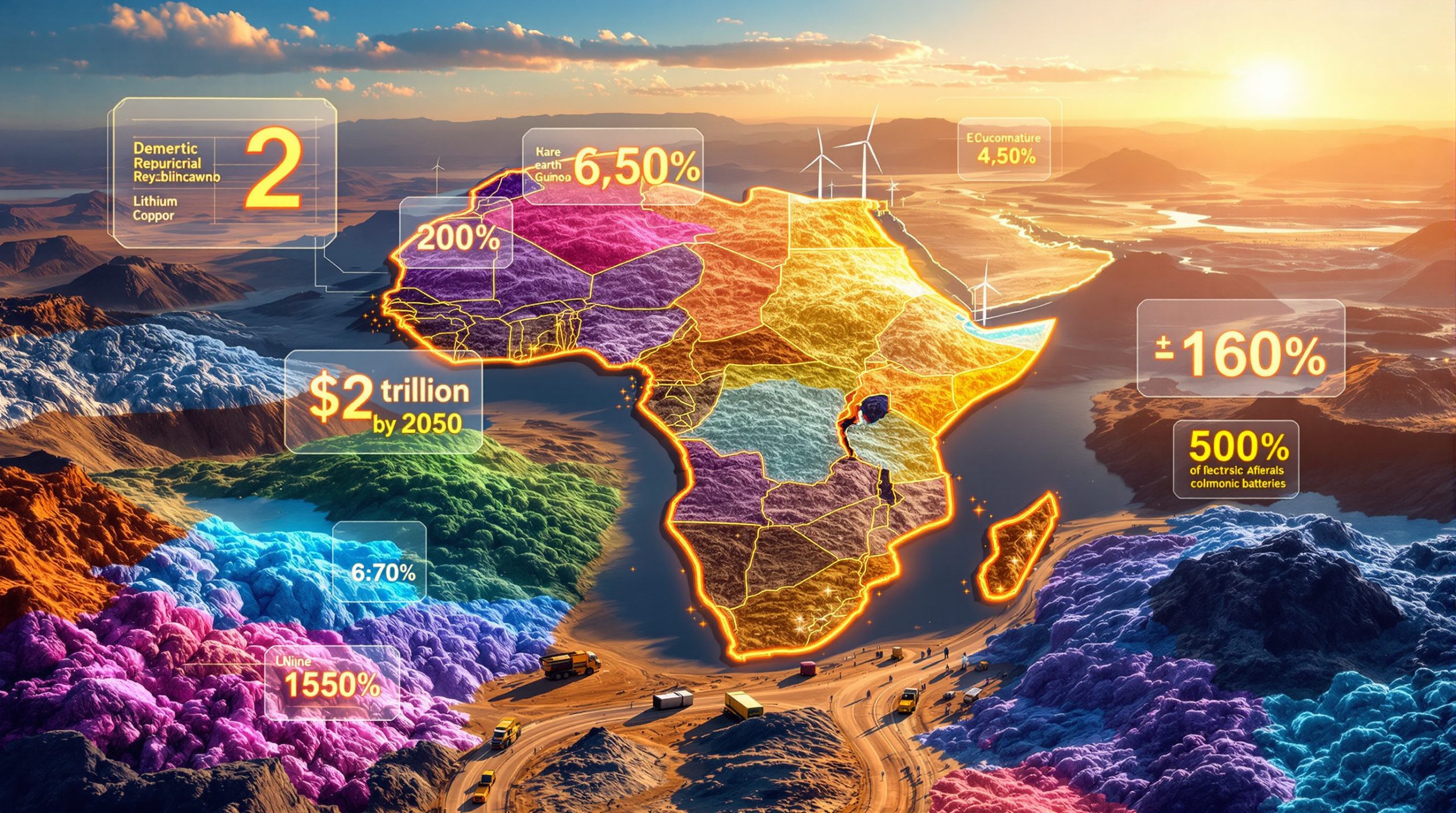Nickel Market Forecast: Analyzing the 198,000 Tonnes Surplus in 2025
The International Nickel Study Group (INSG) projects a significant surplus of 198,000 tonnes in the global nickel market for 2025, continuing a concerning trend of oversupply that has been building since 2023. This forecast represents a 10.6% increase from the 179,000 tonnes surplus recorded in 2024, signaling persistent challenges for price stability in the nickel market. With production growth consistently outpacing demand, industry stakeholders face both challenges and opportunities as they navigate this evolving landscape within the global copper market outlook.
What is the Current State of the Global Nickel Market?
Recent Market Performance and Price Trends
The nickel market has experienced significant volatility over the past 18 months. Prices fell by more than 7% throughout 2024 as inventories rose and demand struggled to keep pace with expanding production capacity. However, 2025 has seen a modest recovery with prices rebounding approximately 3% in the first quarter, primarily due to temporary supply constraints from Indonesia.
This volatility reflects nickel's dual importance in the global economy. While approximately 70% of nickel production still goes into stainless steel manufacturing, the metal's growing role in electric vehicle (EV) batteries has introduced new demand dynamics. High-purity Class 1 nickel, essential for EV batteries, faces different supply-demand fundamentals than the broader nickel market, creating segmentation that influences price movements.
Despite the recent price recovery, the persistent surplus forecast for 2025 threatens to reverse these gains, particularly if Indonesian production constraints ease as expected by mid-year.
2023-2024 Market Balance Overview
The nickel market's oversupply situation has been building systematically. In 2023, the market recorded a surplus of 170,000 tonnes, which expanded to 179,000 tonnes in 2024 – representing a 5.3% increase in surplus volume. This consistent trend of growing surplus over consecutive years demonstrates the structural nature of the imbalance rather than temporary market conditions.
During this period, production grew faster than consumption, with global output reaching 3.526 million tonnes in 2024 compared to demand of 3.347 million tonnes. The gap between supply and demand has widened despite reasonably healthy consumption growth, highlighting the aggressive capacity expansions occurring particularly in Indonesia and China.
What Does the INSG Forecast for the 2025 Nickel Market?
Key Surplus Projections
The International Nickel Study Group's latest forecast points to a 198,000 tonnes surplus for 2025, representing a 10.6% increase compared to 2024's already substantial oversupply. This continues the three-year trend of growing market oversupply, raising concerns about long-term price stability.
The projected surplus represents approximately 5.6% of total global production, a significant imbalance that will likely continue to pressure prices throughout the year unless unexpected disruptions occur in major producing regions. Historically, nickel price recoveries have typically required surplus conditions to drop below 3% of global production.
This persistent surplus condition reflects both aggressive production growth and moderating demand expectations, particularly in the EV sector where adoption rates have not accelerated as rapidly as some forecasts suggested.
Global Production and Usage Forecast
For 2025, the INSG forecasts global primary nickel production to reach 3.735 million tonnes, representing a 5.9% increase from 2024 levels. Meanwhile, global primary nickel usage is expected to reach 3.537 million tonnes, growing at a slightly slower pace of 5.7%.
This production-consumption gap of approximately 198,000 tonnes translates to production outpacing demand by around 5.6%. While consumption growth remains healthy, it cannot keep pace with the rapid expansion of production capacity, particularly from low-cost Indonesian operations and Chinese processing facilities.
Notably, this represents three consecutive years of surplus conditions, a rare occurrence in the historically cyclical nickel market that has typically seen more frequent transitions between deficit and surplus conditions.
How Has the Nickel Market Evolved Since 2023?
Production Growth Analysis
Nickel production has seen remarkable growth over the three-year period from 2023 to 2025. Starting from 3.363 million tonnes in 2023, production grew to 3.526 million tonnes in 2024, and is forecast to reach 3.735 million tonnes in 2025. This represents an impressive 11.1% increase in global production capacity over just three years.
This growth has been driven primarily by Indonesia's laterite ore projects, where the government's ban on raw ore exports has accelerated investments in domestic processing facilities. High-Pressure Acid Leach (HPAL) and nickel pig iron (NPI) facilities have added significant capacity, with several major projects coming online between 2023 and 2025.
Chinese investment has played a crucial role in this expansion, with companies securing Indonesian ore supplies and establishing integrated processing operations. The scale and speed of this capacity growth have exceeded most industry expectations, contributing significantly to the current surplus.
Consumption Patterns
Nickel usage has also shown solid growth, though at a rate insufficient to absorb the production increases. From 3.193 million tonnes in 2023, consumption grew to 3.347 million tonnes in 2024, and is forecast to reach 3.537 million tonnes in 2025 – representing a 10.8% increase over the three-year period.
Stainless steel production, which accounts for the majority of nickel consumption, has maintained steady growth of 4-5% annually, supported by infrastructure development across emerging markets. Meanwhile, battery sector demand has expanded at 15-20% annually, though from a smaller base.
A notable trend affecting consumption has been the increasing adoption of lower-nickel LFP (lithium iron phosphate) batteries in the EV sector, particularly in China. While EV sales continue to grow, the shift toward LFP chemistry for some vehicle segments has moderated the growth rate of nickel demand from this sector. Furthermore, understanding the current commodity super cycle can provide additional context for these market shifts.
What Factors Are Influencing the Nickel Market in 2025?
Indonesian Production Challenges
Indonesia, which now accounts for approximately 40% of global nickel production, faces several challenges that could impact market dynamics in 2025. Most immediately, delays in mining permit (RKAB) issuance have created temporary ore tightness in early 2025, contributing to the modest price recovery observed.
The Indonesian government has implemented a new royalty system for mining operations, replacing the previous fixed-rate approach with an ad valorem system that fluctuates with nickel prices. While aimed at securing greater state revenue from the booming nickel sector, the full impact of this policy shift remains uncertain, with potential implications for investment strategies in marginal projects.
Environmental concerns have also intensified around some Indonesian operations, particularly regarding tailings disposal practices. Increased regulatory scrutiny could potentially limit expansion or require costly remediation measures at some sites, though major producers have generally maintained high environmental standards.
Despite these challenges, Indonesia's dominant position in global nickel market forecast and surplus in 2025 is expected to strengthen further, with several major projects ramping up to full capacity.
Chinese Production Expansion
China continues to expand its nickel processing capabilities, with forecast increases in primary nickel output for 2025. This growth is being driven by additional nickel cathode production from traditional refiners as well as new capacity from integrated producers with operations in both China and Indonesia.
Perhaps most significantly, China is rapidly expanding its nickel sulphate production for battery applications, with several major projects coming online in 2025. This positions China as the dominant supplier of battery-grade nickel, reinforcing its central role in the EV supply chain.
The expansion of Chinese processing capacity has been partially enabled by preferential access to Indonesian ore, highlighting the strategic partnership between the two countries in the nickel sector. This relationship has fundamentally altered global nickel trade flows and will continue to shape market dynamics through 2025 and beyond.
What Are the Implications of the 2025 Nickel Surplus?
Market Price Considerations
The projected 198,000 tonnes surplus in 2025 will likely maintain downward pressure on nickel prices throughout the year. The recent 3% price recovery observed in early 2025 may prove temporary once Indonesian ore supply constraints ease, especially given the growing surplus.
Historical context is informative – the 7% price decline in 2024 occurred during a smaller surplus of 179,000 tonnes. With an even larger oversupply expected in 2025, prices could test the lower end of their recent trading range unless unexpected supply disruptions occur, according to the latest nickel market forecast from INSG.
Production costs provide an important floor for prices. The marginal cost of nickel production from HPAL operations in Indonesia is estimated at $12,000-14,000 per tonne, suggesting prices are unlikely to fall sustainably below this level without triggering production curtailments.
Supply Chain Impact
The ongoing nickel surplus creates winners and losers across the supply chain. Downstream manufacturers stand to benefit significantly from the oversupply conditions, with stainless steel producers and EV battery manufacturers gaining from stable or declining input costs.
For EV battery producers specifically, lower nickel prices improve the cost competitiveness of high-nickel cathode chemistries (NMC and NCA) relative to LFP alternatives. This could potentially slow the shift toward LFP batteries, though other factors including energy density requirements and cobalt availability also influence these decisions.
The stainless steel industry, as the largest consumer of nickel, will likely enjoy margin improvements if nickel prices remain subdued. This could potentially stimulate additional demand, though the price elasticity of stainless steel production has historically been limited.
For producers, particularly higher-cost operations outside Indonesia, the persistent surplus creates significant challenges. Some marginal operations, particularly in Western countries with higher operating costs, may face difficult decisions regarding production curtailments if prices remain depressed. In response, many are turning to digital mining innovations to reduce costs and improve efficiency.
FAQ About the 2025 Nickel Market Forecast
What is causing the nickel market surplus?
The surplus is primarily driven by production growth outpacing demand, with global primary nickel production expected to reach 3.735 million tonnes in 2025 while usage is forecast at 3.537 million tonnes. Indonesia's rapid expansion of nickel processing capacity, supported by Chinese investment, has been the primary driver of supply growth. While demand continues to increase at a healthy rate, particularly from the battery sector, it cannot keep pace with the aggressive capacity additions.
How might Indonesia's mining policies affect the nickel market?
Indonesia's delays in issuing mining permits (RKABs) have created ore tightness in early 2025, while the impact of new royalties on the mining sector remains uncertain. These administrative challenges could temporarily constrain production growth. However, the government remains committed to expanding domestic nickel processing capacity as part of its resource nationalism strategy. While short-term disruptions are possible, Indonesia's overall trajectory toward increased production capacity remains intact.
What role is China playing in the nickel market?
China is expected to increase its primary nickel output through expanded production of nickel cathode and nickel sulphate, contributing significantly to the global supply growth. As the world's largest stainless steel producer and leading EV battery manufacturer, China also dominates nickel consumption. This dual role as both major producer and consumer gives China significant influence over market dynamics. Chinese investments in Indonesian processing capacity have been crucial in enabling the production growth that underlies the current surplus, as outlined in recent industry analysis from Carbon Credits.
How might the nickel surplus affect electric vehicle production?
The nickel market forecast and surplus in 2025 could potentially benefit EV manufacturers through lower battery costs, as nickel is a key component in many EV battery chemistries. For manufacturers using high-nickel cathode formulations (NMC 811 or NCA), lower prices improve cost competitiveness. However, the relationship between raw material prices and final battery costs is complex, with other factors including manufacturing scale, technological improvements, and other material costs also playing important roles. The surplus may also influence battery chemistry decisions, potentially slowing the shift toward lower-nickel alternatives if nickel prices remain depressed.
For investors interested in understanding how these market dynamics might affect potential investments, a comprehensive mining stocks guide can provide valuable insights into this complex sector.
Ready to Capitalise on the Next Major Mineral Discovery?
Stay ahead of market movements with Discovery Alert's proprietary Discovery IQ model, which instantly notifies investors of significant ASX mineral discoveries across all major commodities including nickel. Explore why major mineral discoveries lead to exceptional returns by visiting Discovery Alert's dedicated discoveries page and begin your 30-day free trial today.




